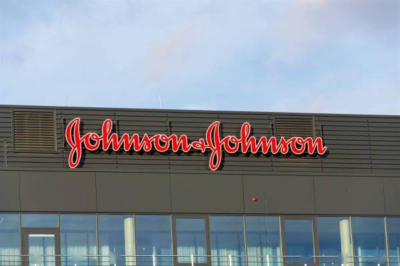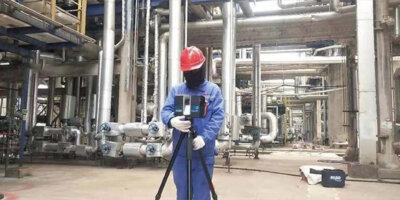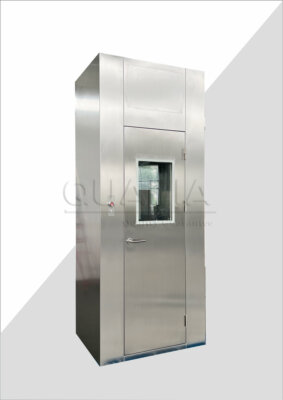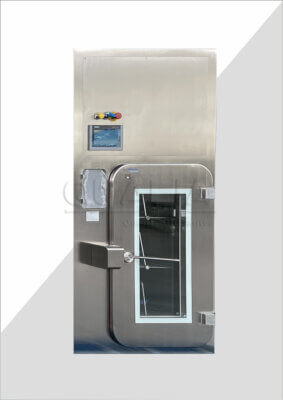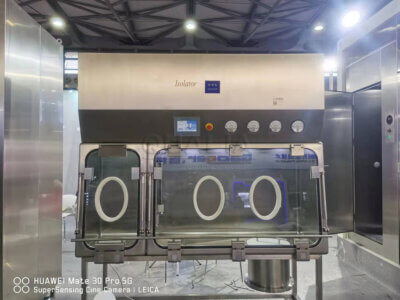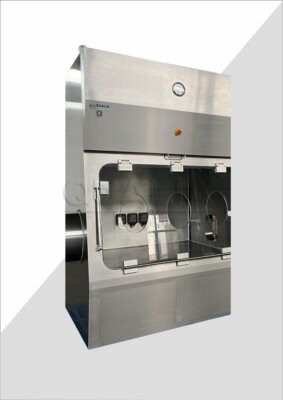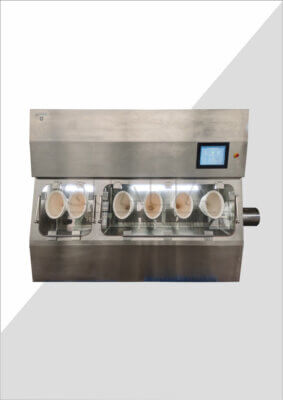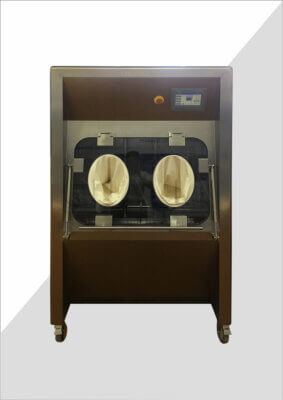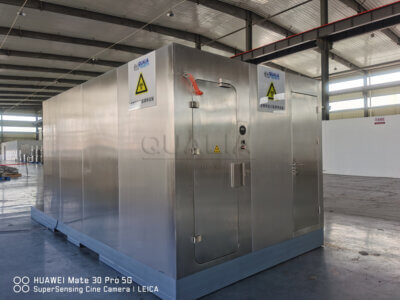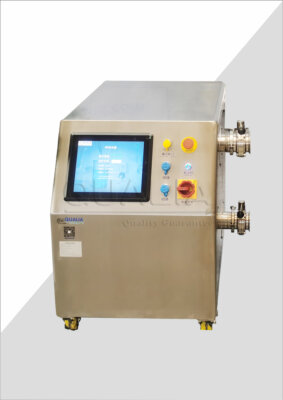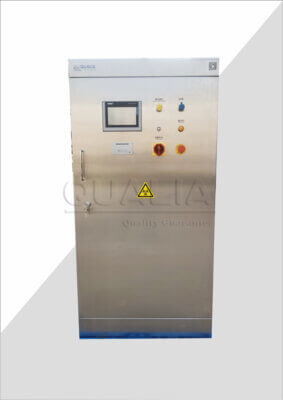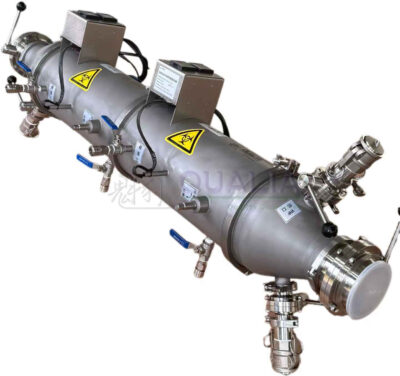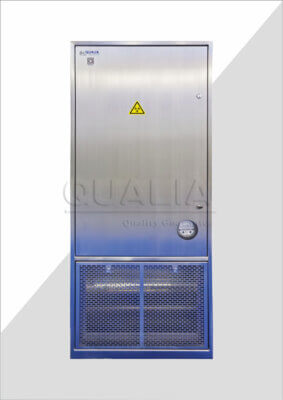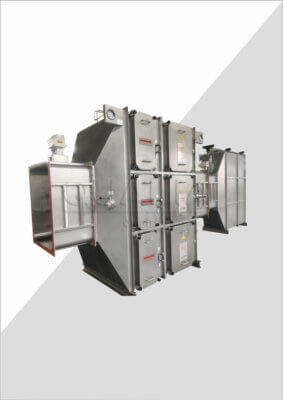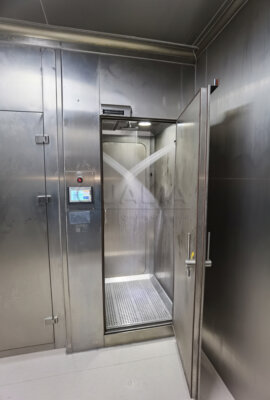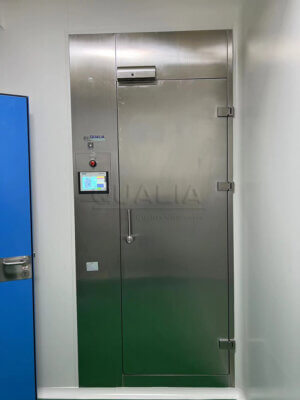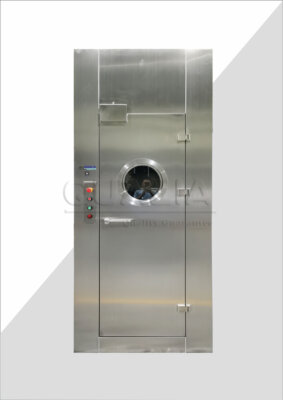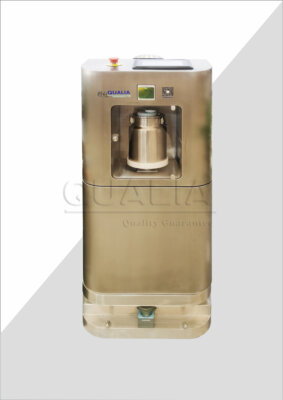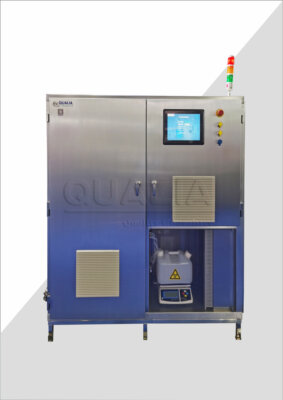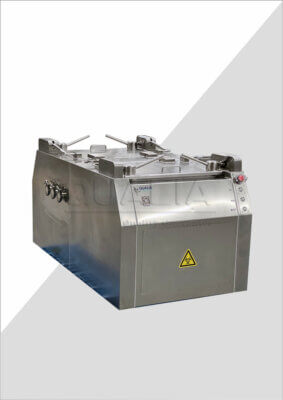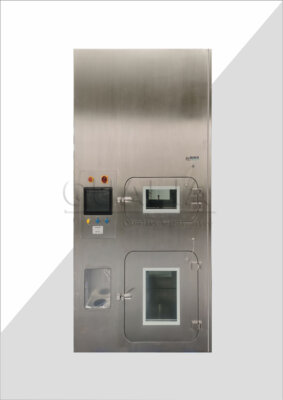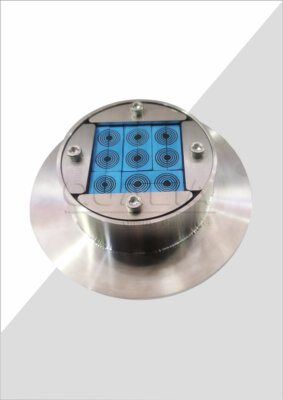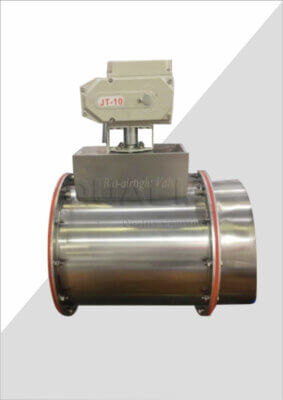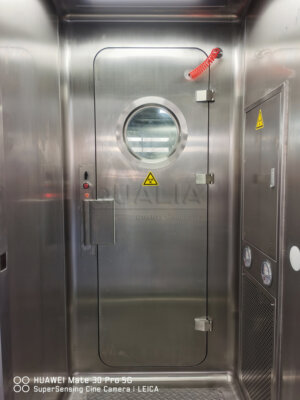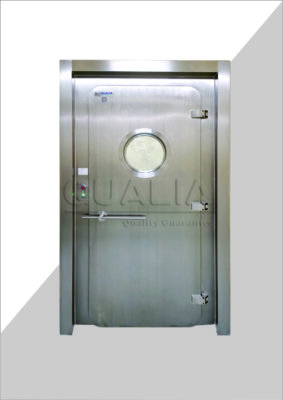Pharmaceutical safety is a critical aspect of drug development and manufacturing, with stringent protocols and systems in place to ensure the highest standards of quality and patient safety. Among these, Closed Restricted Access Barrier Systems (cRABS) have emerged as a crucial component in maintaining sterile environments and minimizing contamination risks. This article delves into the intricacies of cRABS risk management, exploring strategies that pharmaceutical companies employ to enhance safety measures and maintain regulatory compliance.
In the realm of pharmaceutical manufacturing, cRABS play a pivotal role in creating controlled environments for the production of sterile drugs. These systems are designed to minimize human intervention and maintain the integrity of sterile products throughout the manufacturing process. However, with the complexity of these systems comes the need for robust risk assessment and mitigation strategies to ensure their effectiveness and reliability.
As we navigate through the landscape of cRABS risk management, we'll explore the various facets of risk assessment, the implementation of mitigation strategies, and the ongoing challenges faced by the pharmaceutical industry. From regulatory compliance to technological advancements, this article aims to provide a comprehensive overview of the strategies employed to enhance pharma safety through effective cRABS management.
cRABS are essential in maintaining the sterility of pharmaceutical products, but they require comprehensive risk management strategies to ensure their efficacy and compliance with regulatory standards.
What are the key components of cRABS risk assessment?
The foundation of effective cRABS risk management lies in a thorough and systematic risk assessment process. This process involves identifying potential hazards, evaluating their likelihood and impact, and prioritizing risks based on their severity.
Key components of cRABS risk assessment include environmental monitoring, personnel training evaluation, and equipment performance analysis. These elements work together to create a holistic view of the potential risks associated with cRABS operations.
A deeper dive into risk assessment reveals the importance of considering both internal and external factors. Internal factors may include equipment maintenance schedules, operator competency, and standard operating procedures. External factors could encompass regulatory changes, supply chain disruptions, and emerging technological advancements.
Comprehensive cRABS risk assessment requires a multifaceted approach that considers both operational and environmental factors to identify potential vulnerabilities in the sterile manufacturing process.
To illustrate the complexity of cRABS risk assessment, consider the following table outlining common risk factors and their potential impacts:
| Risk Factor | Potential Impact | Assessment Priority |
|---|---|---|
| Microbial Contamination | Product Sterility Compromise | High |
| Equipment Malfunction | Production Delays | Medium |
| Operator Error | Quality Control Issues | High |
| Power Outages | System Integrity Breach | Medium |
| Material Compatibility | Product Quality Degradation | Low |
In conclusion, a robust cRABS risk assessment forms the cornerstone of effective risk management in pharmaceutical manufacturing. By thoroughly evaluating all potential hazards and their impacts, companies can develop targeted strategies to mitigate risks and enhance overall safety protocols.
How can pharmaceutical companies implement effective cRABS risk mitigation strategies?
Implementing effective cRABS risk mitigation strategies is crucial for pharmaceutical companies to maintain the integrity of their sterile manufacturing processes. These strategies should be comprehensive, addressing both preventive measures and responsive actions to potential risks identified during the assessment phase.
Key elements of cRABS risk mitigation include the development of standard operating procedures (SOPs), regular maintenance schedules, and ongoing personnel training programs. Additionally, companies must invest in advanced monitoring systems and implement rigorous quality control measures.
One of the most critical aspects of risk mitigation is the establishment of a robust environmental monitoring program. This program should include regular testing of air quality, surface contamination, and personnel hygiene to ensure the maintenance of sterile conditions within the cRABS environment.
Effective cRABS risk mitigation requires a proactive approach that combines technological solutions with stringent operational protocols to minimize the potential for contamination and system failures.
To illustrate the multifaceted nature of cRABS risk mitigation, consider the following table outlining various strategies and their intended outcomes:
| Mitigation Strategy | Intended Outcome | Implementation Complexity |
|---|---|---|
| Real-time Monitoring Systems | Early Detection of Anomalies | High |
| Automated Cleaning Protocols | Consistent Decontamination | Medium |
| Personnel Certification Programs | Improved Operator Competency | Medium |
| Redundant Power Systems | Uninterrupted Operations | High |
| Material Compatibility Testing | Enhanced Product Stability | Low |
In conclusion, implementing effective cRABS risk mitigation strategies requires a comprehensive approach that addresses all aspects of the manufacturing process. By combining technological solutions with rigorous operational protocols, pharmaceutical companies can significantly reduce the likelihood of contamination events and system failures, thereby enhancing overall product safety and quality.
What role does regulatory compliance play in cRABS risk management?
Regulatory compliance is a cornerstone of cRABS risk management in the pharmaceutical industry. It serves as a framework for ensuring that risk assessment and mitigation strategies meet the stringent standards set by regulatory bodies such as the FDA, EMA, and other international authorities.
Key aspects of regulatory compliance in cRABS risk management include adherence to Good Manufacturing Practices (GMP), implementation of Quality Management Systems (QMS), and regular audits to verify compliance. These elements work together to create a robust system that aligns with global regulatory requirements.
QUALIA plays a crucial role in helping pharmaceutical companies navigate the complex landscape of regulatory compliance in cRABS risk management. Their expertise in quality assurance and regulatory affairs ensures that companies can implement risk management strategies that not only meet but often exceed regulatory expectations.
Regulatory compliance in cRABS risk management is not just about meeting minimum standards; it's about establishing a culture of quality and safety that permeates every aspect of pharmaceutical manufacturing.
To illustrate the impact of regulatory compliance on cRABS risk management, consider the following table:
| Regulatory Requirement | Risk Management Impact | Compliance Complexity |
|---|---|---|
| Validation Documentation | Ensures Process Consistency | High |
| Change Control Procedures | Minimizes Unintended Consequences | Medium |
| Personnel Qualification Records | Maintains Operator Competency | Low |
| Environmental Monitoring Logs | Verifies Sterile Conditions | Medium |
| Equipment Calibration Certificates | Guarantees Accurate Performance | High |
In conclusion, regulatory compliance is integral to effective cRABS risk management. It provides a structured approach to identifying, assessing, and mitigating risks while ensuring that pharmaceutical companies maintain the highest standards of product safety and quality. By prioritizing regulatory compliance, companies can build trust with regulatory bodies and consumers alike, ultimately contributing to the overall safety and efficacy of pharmaceutical products.
How do technological advancements impact cRABS risk assessment and mitigation strategies?
Technological advancements have revolutionized the landscape of cRABS risk assessment and mitigation strategies in the pharmaceutical industry. These innovations have introduced new tools and methodologies that enhance the precision, efficiency, and effectiveness of risk management processes.
Key technological advancements impacting cRABS risk management include artificial intelligence (AI) for predictive analytics, Internet of Things (IoT) devices for real-time monitoring, and advanced robotics for minimizing human intervention. These technologies work synergistically to provide a more comprehensive and proactive approach to risk management.
The integration of these advanced technologies allows for more sophisticated risk assessment models that can identify potential issues before they escalate. For instance, AI algorithms can analyze vast amounts of data to detect patterns and anomalies that might be indicative of emerging risks, enabling preemptive action.
The integration of cutting-edge technologies in cRABS risk management not only enhances the accuracy of risk assessments but also enables more targeted and efficient mitigation strategies.
To illustrate the impact of technological advancements on cRABS risk management, consider the following table:
| Technology | Application in Risk Management | Impact on Safety |
|---|---|---|
| AI Predictive Analytics | Early Risk Detection | High |
| IoT Sensors | Real-time Environmental Monitoring | Very High |
| Advanced Robotics | Reduced Human Intervention | High |
| Blockchain | Enhanced Data Integrity | Medium |
| Virtual Reality | Improved Operator Training | Medium |
In conclusion, technological advancements have significantly enhanced the capabilities of pharmaceutical companies in managing cRABS-related risks. By leveraging these innovations, companies can achieve more accurate risk assessments, implement more effective mitigation strategies, and ultimately ensure higher levels of safety and quality in pharmaceutical manufacturing processes.
What are the challenges in implementing cRABS risk management strategies?
Implementing cRABS risk management strategies in pharmaceutical manufacturing comes with its own set of challenges. These obstacles can range from technical complexities to organizational resistance, requiring a multifaceted approach to overcome.
Key challenges include the high costs associated with implementing advanced technologies, the need for specialized training for personnel, and the difficulty in integrating new systems with existing infrastructure. Additionally, there's the ongoing challenge of keeping pace with rapidly evolving regulatory requirements and technological advancements.
One significant hurdle is the balance between maintaining sterility and operational efficiency. Overly stringent controls can slow down production, while lax measures can compromise product safety. Finding the right balance requires continuous assessment and adjustment of risk management strategies.
The implementation of cRABS risk management strategies is not a one-time effort but an ongoing process that requires continuous evaluation, adaptation, and improvement to address emerging challenges and evolving standards.
To better understand the challenges and their potential solutions, consider the following table:
| Challenge | Potential Impact | Mitigation Approach |
|---|---|---|
| High Implementation Costs | Budget Constraints | Phased Implementation |
| Specialized Training Needs | Operational Delays | Comprehensive Training Programs |
| System Integration Issues | Inefficient Processes | Modular System Design |
| Regulatory Compliance Complexity | Non-compliance Risks | Regular Regulatory Updates |
| Balancing Sterility and Efficiency | Production Bottlenecks | Risk-based Approach |
In conclusion, while the challenges in implementing cRABS risk management strategies are significant, they are not insurmountable. By adopting a proactive, flexible approach and leveraging resources such as cRABS risk assessment and mitigation strategies, pharmaceutical companies can effectively navigate these challenges. This ensures the maintenance of high safety standards while optimizing operational efficiency in sterile manufacturing environments.
How can continuous improvement be integrated into cRABS risk management?
Continuous improvement is a critical component of effective cRABS risk management in the pharmaceutical industry. It ensures that risk assessment and mitigation strategies remain relevant and effective in the face of evolving challenges and technological advancements.
Key aspects of continuous improvement in cRABS risk management include regular review of risk assessment methodologies, ongoing evaluation of mitigation strategies, and the incorporation of lessons learned from near-misses and incidents. This approach allows for the refinement and optimization of risk management processes over time.
Implementing a culture of continuous improvement requires commitment from all levels of the organization. It involves encouraging feedback from operators, analyzing performance metrics, and staying abreast of industry best practices and technological innovations.
Continuous improvement in cRABS risk management is not just about addressing current risks but also about anticipating future challenges and proactively developing strategies to mitigate them.
To illustrate the process of continuous improvement in cRABS risk management, consider the following table:
| Improvement Area | Action | Expected Outcome |
|---|---|---|
| Risk Assessment Methods | Regular Methodology Reviews | Enhanced Risk Identification |
| Mitigation Strategies | Effectiveness Evaluations | Optimized Risk Reduction |
| Training Programs | Periodic Content Updates | Improved Personnel Competency |
| Technology Integration | Ongoing System Upgrades | Increased Operational Efficiency |
| Regulatory Compliance | Proactive Standard Adoption | Sustained Compliance |
In conclusion, integrating continuous improvement into cRABS risk management is essential for maintaining the effectiveness of safety protocols in pharmaceutical manufacturing. By fostering a culture of ongoing evaluation and adaptation, companies can ensure that their risk management strategies remain robust and responsive to the dynamic challenges of sterile manufacturing environments.
What future trends can we expect in cRABS risk management for pharma safety?
As the pharmaceutical industry continues to evolve, so too do the strategies and technologies employed in cRABS risk management. Anticipating future trends is crucial for staying ahead of potential risks and maintaining the highest standards of safety in sterile manufacturing environments.
Key trends on the horizon include the increased use of artificial intelligence and machine learning for predictive risk analysis, the adoption of blockchain technology for enhanced traceability, and the integration of virtual and augmented reality for operator training and system maintenance.
Another significant trend is the move towards more personalized medicine, which may require more flexible and adaptable cRABS configurations. This shift could introduce new challenges in risk management, necessitating innovative approaches to maintain sterility and product integrity.
The future of cRABS risk management in pharma safety will likely be characterized by increased automation, data-driven decision making, and a greater emphasis on proactive risk mitigation strategies.
To illustrate some of the anticipated trends in cRABS risk management, consider the following table:
| Future Trend | Potential Impact | Implementation Timeline |
|---|---|---|
| AI-Driven Risk Analysis | Enhanced Predictive Capabilities | Short-term (1-3 years) |
| Blockchain for Traceability | Improved Supply Chain Security | Medium-term (3-5 years) |
| VR/AR for Training | Reduced Human Error | Short-term (1-3 years) |
| Flexible cRABS Configurations | Adaptability to Personalized Medicine | Long-term (5+ years) |
| Autonomous Cleaning Systems | Increased Sterility Assurance | Medium-term (3-5 years) |
In conclusion, the future of cRABS risk management in pharmaceutical safety promises to be dynamic and technology-driven. By staying abreast of these trends and proactively adapting risk management strategies, pharmaceutical companies can ensure they remain at the forefront of safety and quality in sterile manufacturing processes.
In conclusion, cRABS risk management is a critical component of ensuring pharmaceutical safety in sterile manufacturing environments. From comprehensive risk assessments to the implementation of effective mitigation strategies, the process requires a multifaceted approach that combines technological innovation with stringent operational protocols.
The role of regulatory compliance cannot be overstated, as it provides the framework within which all risk management activities must operate. As we've explored, technological advancements continue to shape the landscape of cRABS risk management, offering new tools and methodologies for enhancing safety and efficiency.
Despite the challenges inherent in implementing robust risk management strategies, the pharmaceutical industry continues to evolve and adapt. The integration of continuous improvement practices ensures that risk management approaches remain effective and relevant in the face of changing circumstances and emerging risks.
Looking to the future, we can anticipate further advancements in areas such as artificial intelligence, blockchain technology, and personalized medicine, all of which will undoubtedly influence the way we approach cRABS risk management.
Ultimately, the goal of cRABS risk management in pharmaceutical safety is to ensure the highest standards of product quality and patient safety. By embracing innovation, maintaining regulatory compliance, and fostering a culture of continuous improvement, the pharmaceutical industry can continue to meet this crucial objective, safeguarding public health and maintaining trust in the medications that millions rely on every day.
External Resources
Risk Assessment and Mitigation Program (RAMP) – This resource details the California Dungeness Crab Fishing Gear Working Group's Risk Assessment and Mitigation Program (RAMP) aimed at assessing and mitigating the risk of whale entanglements in Dungeness crab fishing gear.
Management Plan for the European Green Crab – This plan, developed by the European Green Crab Working Group, outlines strategies for detecting, responding to, and controlling the invasion of European Green Crabs, which can be relevant for understanding invasive species risk assessment and mitigation.
Blue Crabs – Chesapeake Bay Program – This resource discusses the management strategies for blue crab populations in the Chesapeake Bay, including water quality improvements, underwater grass restoration, and proper fishery management to protect blue crab populations.
Mitigation strategies to control a carbapenem-resistant Acinetobacter baumannii outbreak – Although focused on a healthcare setting, this article provides a detailed approach to risk assessment and mitigation strategies, which can be adapted to understand comprehensive risk management principles.
National Oceanic and Atmospheric Administration (NOAA) – Bycatch Reduction – NOAA's bycatch reduction programs include risk assessment and mitigation strategies for reducing bycatch, including crabs, which is crucial for sustainable fisheries management.
Fisheries and Oceans Canada – Risk Assessment Framework – This framework provides a structured approach to conducting risk assessments in fisheries management, which can be applied to crab fisheries to identify and mitigate risks.
International Union for Conservation of Nature (IUCN) – Crab Fisheries Management – IUCN resources often include guidelines and best practices for managing crab fisheries sustainably, which involve risk assessment and mitigation strategies to protect both the environment and the fishery.
Ocean Conservancy – Sustainable Fisheries – This organization provides information on sustainable fisheries practices, including risk assessment and mitigation strategies to ensure the long-term health of crab populations and the ecosystems they inhabit.
Related Contents:
- cRABS Material Transfer: Ensuring Sterile Product Flow
- cRABS Waste Management: Safe Disposal in Sterile Pharma
- Top 5 Benefits of cRABS in Pharma Manufacturing
- cRABS Compliance: Meeting Pharmaceutical Regulations
- Validating cRABS: Ensuring Compliance in Pharma
- cRABS Cost Analysis: ROI in Pharmaceutical Production
- Integrating cRABS: Upgrade Your Pharma Production Line
- cRABS Glove Systems: Balancing Safety and Dexterity
- cRABS Air Systems: Ensuring ISO 5 Environment

